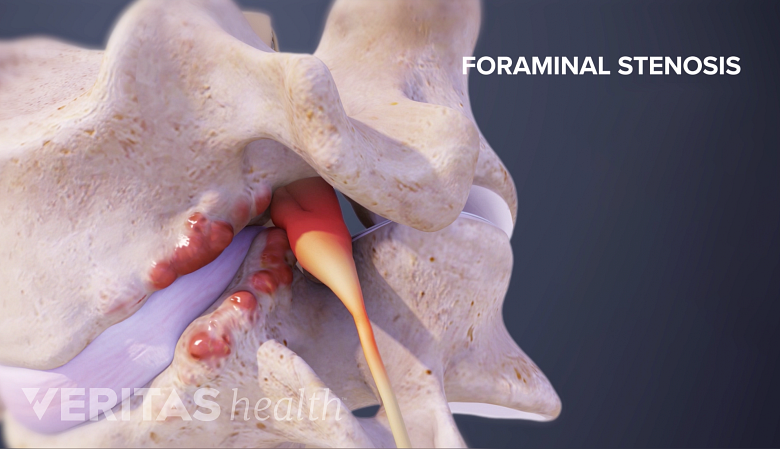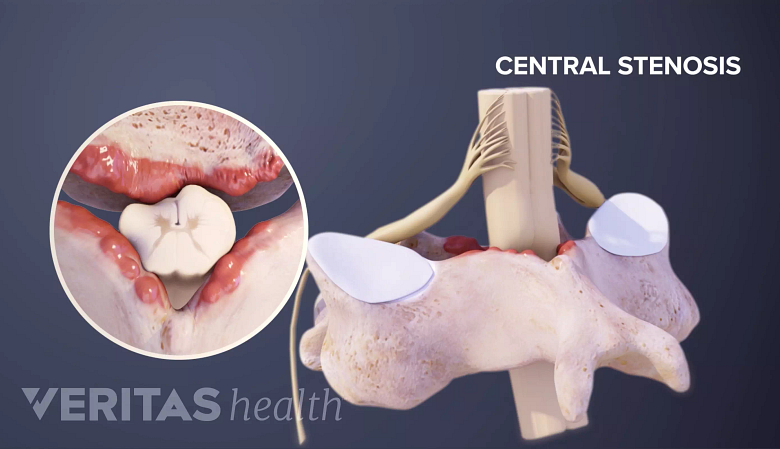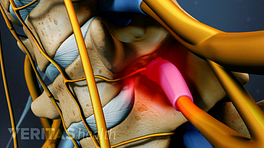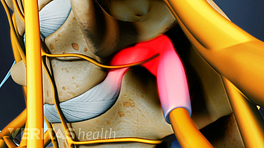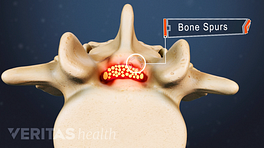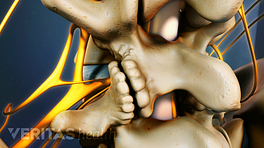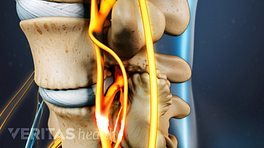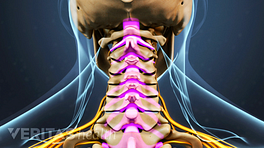Spinal stenosis is a general term for the narrowing of one or more foramina (bony openings) within the spine. There are specific names for spinal stenosis depending on the exact location(s) of where the narrowing and nerve compression occurs.
The two general types of spinal stenosis are foraminal stenosis, also called lateral stenosis, which involves compression or inflammation of a spinal nerve; and central canal stenosis, which involves compression or inflammation of the spinal cord.
In This Article:
Foraminal Stenosis (Lateral Stenosis)
Foraminal stenosis occurs when the spinal nerves are constricted upon by the bony openings (foramina) that they pass through.
The intervertebral foramen is the bony opening where a spinal nerve exits the spinal canal between two adjacent vertebrae. When one or more of these foramina narrows, it is called foraminal stenosis. With foraminal stenosis, the spinal nerve has less space and may become pinched, painful, and/or dysfunctional.
While foraminal stenosis can occur in any of the intervertebral foramina throughout the spine, it most commonly occurs in the lumbar spine. It can also occur in the cervical spine but rarely in the thoracic spine.
See Lumbar Spinal Stenosis and Cervical Foraminal Stenosis
The terms foraminal stenosis and lateral stenosis are often used interchangeably because they both refer to stenosis occurring laterally (to the side) of the spinal canal. Other terms that might be used to more accurately identify the location of the spinal nerve compression include:
- Lateral recess stenosis occurs when the spinal nerve is compressed just before it reaches the intervertebral foramen.
- Far lateral stenosis occurs when the spinal nerve has already exited the intervertebral foramen.
In many cases of foraminal stenosis, some lateral recess stenosis or far lateral stenosis also occurs. On this website, foraminal stenosis is the umbrella term used for all of these types of lateral stenosis.
Central Canal Stenosis
Central canal stenosis occurs when the spinal cord is constricted upon by the bony spinal canal it runs through.
The vertebral foramen is the bony opening in the center of the vertebra that protects the spinal cord as it runs down the spinal canal. When one or more of these vertebral foramina narrow, it is called central canal stenosis. With central canal stenosis, the spinal cord has less space and may become compressed, which can lead to pain and/or dysfunction experienced anywhere in the body below the level of compression.
While central canal stenosis can occur in any of the vertebral foramina throughout the spine, it most commonly occurs in the lumbar or cervical spine. It is also possible for both foraminal stenosis and central canal stenosis to occur together.
When spinal stenosis occurs, it is estimated that between 5% and 60% of the cases involve at least 2 levels of the spine, such as the cervical and lumbar regions (tandem stenosis). 1 Majid K. Pathophysiology, clinical presentation, natural history, and review of the SPORT trials. Seminars in Spine Surgery. 2013; 25(4):228-33. doi: 10.1053/j.semss.2013.05.002. , 2 Overly SC, Kim JS, Gogel BA, Merrill RK, Hecht AC. JBJS Reviews. 2017; 5(9), e2. doi: 10.2106/jbjs.rvw.17.00007. The signs, symptoms, and diagnosis of spinal stenosis, described on the next page, can vary greatly depending on the location and severity.

